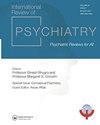精神病学教育中艺术与人文学科的系统回顾
IF 3.7
4区 医学
Q1 PSYCHIATRY
引用次数: 0
摘要
摘要本系统综述了针对精神病学学习者的艺术和人文课程的已发表文献,包括任何形式的课程评估。作者检索了三个数据库(Medline ALL, Embase.com和PsycINFO)来确定精神病学教育中艺术和人文学科的文章。评价标准包括报告精神病学学习者艺术和人文学习活动结果的文章。对于那些符合纳入标准的文章,进行描述性分析以及使用Kirkpatrick框架对程序评估水平进行评估。在鉴定的1287篇文章中,35篇符合纳入标准。大约一半的项目包括医学生(n = 17,49%)。电影和电视是最常见的艺术和人文学科(n = 16, 46%)。大多数研究采用非随机、非对照设计(n = 30,86%)。22项(63%)达到了Kirkpatrick 1级指定,12项达到了2级(34%),一项研究达到了3级(3%)。艺术和人文学科在精神病学教育中具有广阔的前景。目前,现有文献的显著异质性使得很难得出可以指导未来项目发展的一般性结论。这篇综述强调了精神病学学习者需要严格的艺术和人文课程评估方法。关键词:医学教育精神病学住院医师培训视觉艺术表演艺术文学披露声明作者报告无利益冲突。作者独自负责论文的内容和写作。额外的informationFundingDr。玛格丽特·s·奇索姆是保罗·麦克休人类繁荣项目的主任,她的工作得到了该项目的支持。本文章由计算机程序翻译,如有差异,请以英文原文为准。
A systematic review of the arts and humanities in psychiatry education
AbstractThis systematic review characterizes the published literature on arts and humanities curricula for psychiatry learners that include any form of program evaluation. Authors searched three databases (Medline ALL, Embase.com, and PsycINFO) to identify articles on arts and humanities in psychiatry education. Criteria for the review included articles reporting outcome measures for arts and humanities learning activities in psychiatry learners. For those articles meeting inclusion criteria, a descriptive analysis was performed as well as an assessment of the level of program evaluation using the Kirkpatrick framework. Of 1,287 articles identified, 35 met inclusion criteria. About half of the programs included medical students (n = 17, 49%). Film and television was the most frequent arts and humanities subject (n = 16, 46%). Most studies incorporated a non-randomized, non-controlled design (n = 30, 86%). Twenty-two (63%) achieved a Kirkpatrick Level 1 designation, 12 achieved Level 2 (34%), and one study achieved Level 3 (3%). Arts and humanities programs have a promising role in psychiatry education. At present, significant heterogeneity in the extant literature makes it difficult to draw general conclusions that could guide future program development. This review underscores the need for rigorous evaluative methods of arts and humanities programs for psychiatry learners.Keywords: Medical educationpsychiatry residency trainingvisual artsperforming artsliterature Disclosure statementThe authors report no conflicts of interest. The authors alone are responsible for the content and writing of the paper.Additional informationFundingDr. Margaret S. Chisolm is the director of the Paul McHugh Program for Human Flourishing, through which her work is supported.
求助全文
通过发布文献求助,成功后即可免费获取论文全文。
去求助
来源期刊

International Review of Psychiatry
PSYCHIATRY-
CiteScore
5.10
自引率
0.00%
发文量
85
期刊介绍:
The International Review of Psychiatry is the premier review journal in the field with a truly international authorship and readership. Each bimonthly issue is dedicated to a specific theme relevant to psychiatry, edited by recognized experts on the topic, who are selected by the Editors and the Editorial Board. Each issue provides in-depth, scholarly reviews of the topic in focus. The Journal reaches a broad international readership including clinicians, academics, educators, and researchers who wish to remain up-to-date with recent and rapid developments in various fields of psychiatry. It aims to be of value to trainees by choosing topics of relevance to career development, which are also suitable for clinicians for continuing professional development.
 求助内容:
求助内容: 应助结果提醒方式:
应助结果提醒方式:


